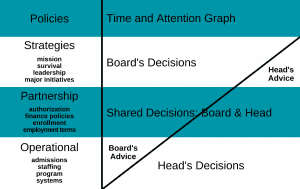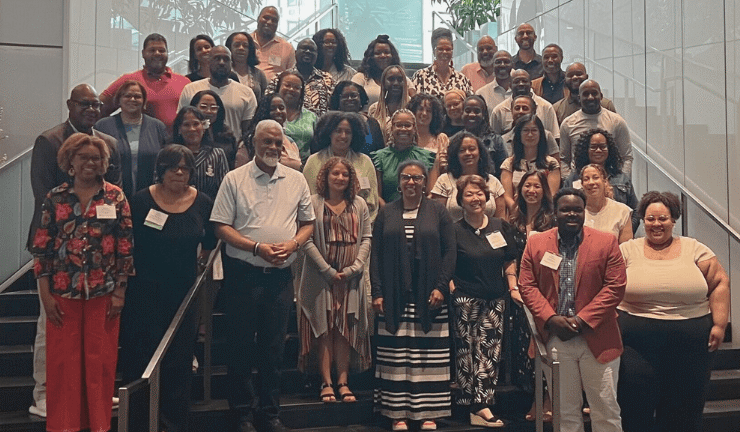Independent Governance in a Post-Pandemic Era

The CS&A Consulting Team has spent much of the past two years helping heads and boards guide their schools through unprecedented times. Just about every aspect of independent education has been disrupted by a series of elements that we’ve described in an earlier blog post as education’s “Perfect Storm.” Schools have faced a plethora of challenges, but at the heart of the storm are the concomitant emergence of the COVID-19 pandemic along with intense social and political conflict and polarization. As a result, heads and boards have had to venture into new organizational territory, making numerous quick decisions about programming and policies.
During this time, out of necessity, boards of trustees have often found themselves engaged in conversations and decision-making about operational issues that previously were left to heads and their leadership teams. Should we shift to remote classes? If we do, what support should we offer students and teachers? What happens to sports and extracurricular programs? When and how do we return to in-person learning? What will be our COVID protocols when we do? Are their implications for the budget, for tuition, for fund-raising? Because of the unprecedented element of such decisions, heads and their leadership teams needed the broader involvement of their boards, and vice-versa.
As we’ve said often, we’ve been impressed with how schools have risen to the occasion and have addressed the myriad challenges, some with remarkable acuity. But now that we’re easing out of the pandemic and reestablishing new routines and processes on campuses in what is no doubt a new era for independent education, it would be a mistake for boards to simply let the pandemic-driven emergency practices continue to be the process by which they operate. Rather, we believe that independent school governance needs a thoughtful and conscious reset.
Stepping Back to Move Forward
To this end, we recommend that trustees step back this summer and early fall and perform an honest and frank audit of board responsibilities with the intent of restoring or tweaking best practices. For the sake of good governance and the health of their schools, boards need to pause now and ask themselves fundamental questions: Where did the board step into operations appropriately and where did the board over-step its responsibilities? How does the board see its role playing out in a post-pandemic era? Where are the lines between governance and operations now? What arrangement with the head of school will help the school thrive today?
Design of Partnership
As a template for this audit, we would recommend that the board and head review the NAIS Design of Partnership together and create school-specific case studies of the most difficult issues and decisions the board and head had to deal with during these challenging last two years.
*from the NAIS Trustee Handbook
Placing those decisions on the partnership graph can generate important and valuable discussions about how a board can return to good governance practices. In particular, this exercise is essential for schools with new heads. As new heads begin their tenures — whether as first-time heads or experienced heads coming to a new school — closely examining governance dynamics and the board-head relationship now gives schools the greatest chance of success under the new head’s leadership.
The Role of Coaching and Mentoring in the Process
Our annual survey of new heads of school confirms that the single most important concern of new heads, in fact, is governance. For first-time heads, this is often the area of least experience, which creates the potential for problems and conflict in the first year or two. In our experience, having a coach work with both the new head and by extension the board early in their partnership can help surface and address areas of potential conflict. This enables heads and boards to best understand their roles and their relationship — and how they work constructively as a team. In short, a coach can help a great deal in supporting the transition to best board practices and a strong board-head relation for the post-pandemic era.
Of course, the single most important relationship in this new partnership is between the board chair and the new head. Given this, we recommend in particular that a new coaching arrangement begin with an open and frank discussion that includes the coach, the new head, and the board chair. These conversations are essential given that the search process for a new head of school creates enormous, and often unrealistic, leadership expectations from the board and the community — especially today, when schools everywhere are reevaluating their missions and programs. When the transition of leadership has occurred following a disruptive departure of a previous head or during periods of challenging governance issues—circumstances that are often related — the expectations put on new heads are even greater.
Coaching can help both level and set expectations. During these times of transition, coaching can provide a third-party audit of governance issues with the singular goal of assisting in the early success of a new head of school in their leadership tenure.
Separating the Past from the Future
The big danger that we see in the post-pandemic era is for boards to let the emergency practices driven by the tumultuous impact of the pandemic to spill over into the post-pandemic era. As schools settle back into in-person learning and establish new routines and practices — and, indeed, address other issues, including those raised by the social and political tension of the day — it’s so important for boards to take this time to reflect on their governance roles and on their relationship with the head and the head’s leadership team. Doing so now is the best way to ensure your school moves forward as vibrant community with a bright future.
Peter O’Neill is one of Carney, Sandoe & Associates’ Senior Consultants for leadership search. He also serves as a member of our Coaching and Mentoring Practice and as a consultant to boards of trustees for strategic planning and governance.









